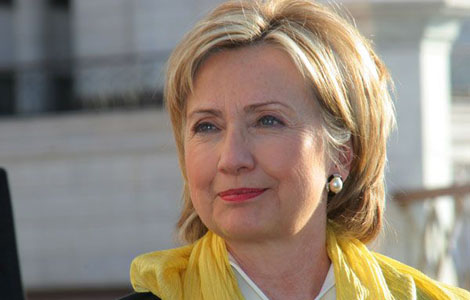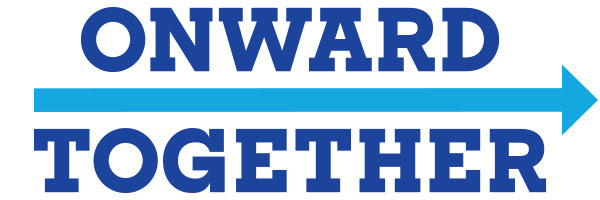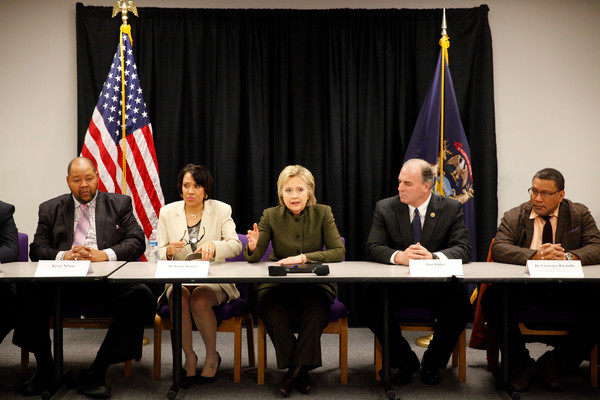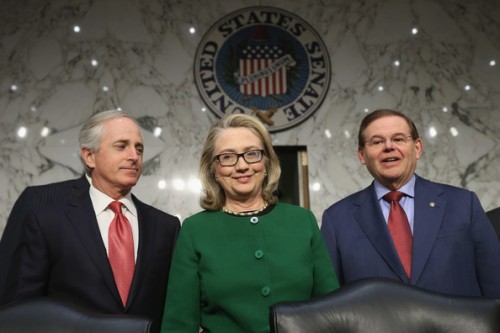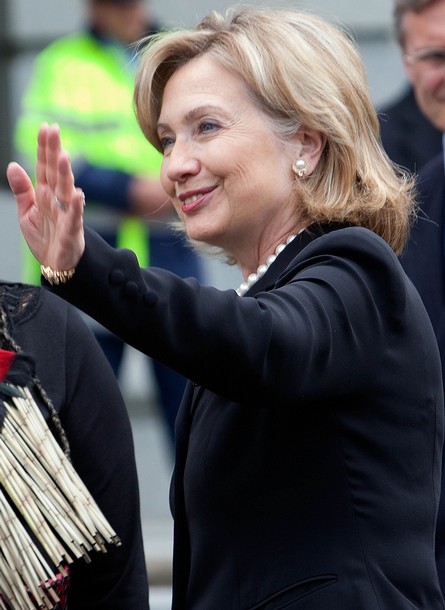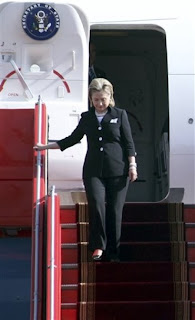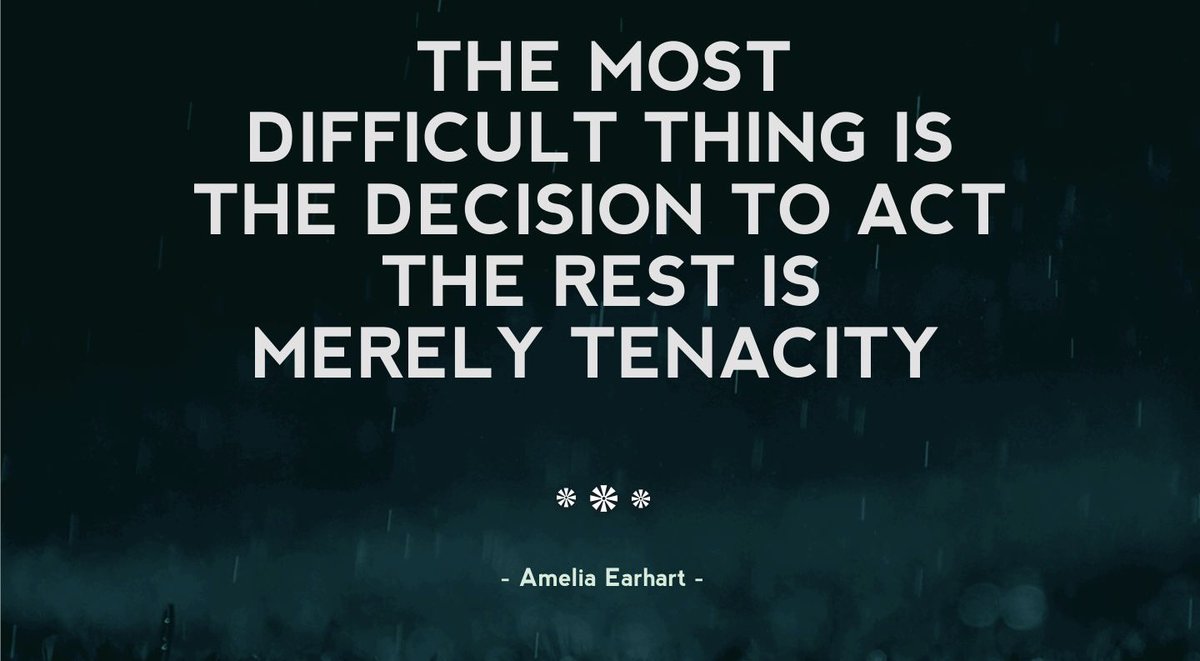World Water Day
Hillary Rodham Clinton
Secretary of State
National Geographic Society
Washington, DC
March 22, 2010
Thank you. Thank you very much. It is always a great pleasure to be here at the National Geographic Society, one of the treasures not only of Washington but of our country. And I thank Gil Grosvenor and everyone associated with the Society. I appreciate Maria Otero for her introduction. The water advocates who are gathered here today, thank you for your work.
And I want to recognize the other speakers who are participating, including the congressman. You know Earl is a champion of quality of life issues, and I think when he started in the Congress he was a little bit of a lonely voice. But gradually, people have seen the connections between a lot of the big issues of the day that take up the headlines and the day-to-day concerns of how people live, how they interact, how they commute. I want to tell Earl that I just inaugurated the showers for bikers at the State Department – (applause) – and I thought of you because the bikers gave me one of your bicycle signals. So we’re making progress, slowly but surely.
I know that you heard from my friend, President Ellen Johnson Sirleaf, who serves as the Goodwill Ambassador for Water in Africa, and has already addressed you via video. And I also want to be sure to recognize the diplomatic community that is here today. The head of our Millennium Challenge Corporation, Daniel Yohannes – thank you, Daniel. Maybe people haven’t met you yet, but I want everyone to do so. (Applause.)
And I just appreciate coming today because I can’t think of a better way to mark World Water Day and I can’t think of a better person to be the MC than Hattie Babbitt. Hattie’s been a friend of mine for a long time and has been involved in so many important issues, and I’m so pleased to see her today.
Water – it kind of goes without saying – certainly deserves the attention it’s receiving today. Because in many ways, it does define our blue planet. It’s critical to almost every aspect of human endeavor, from agriculture, to industry, to energy. Like the air we breathe, it is vital to the health of individuals and communities. And both literally and figuratively, water represents the wellspring of life on earth.
Now, of course, water can also bring devastation. Floods and droughts now touch more people than all other natural disasters combined. And inadequate access to water supply, sanitation, and hygiene cause the deaths of more than 1.5 million children each year. Water challenges are most obvious in developing nations, but they affect every country on earth. And they transcend political boundaries. As water becomes increasingly scarce, it may become a potential catalyst for conflict among – and within – countries.
As I speak today, a young family in North Dakota is huddled together praying that the Red River won’t overflow its banks again and destroy their home. A farmer in Southern China is realizing that amid the worst drought in 60 years, he just may not be able to plant his crops this Spring. A mother living in Ethiopia is carrying a jerry can of water back to her family, hoping she won’t be attacked along the way. Water issues are an urgent concern every day of every year for individuals, communities, and countries around the world.
And as pressing as water issues are now, they will become even more important in the near future. Experts predict – and many of you are in this audience who are experts – that by 2025, just 15 years from now, nearly two-thirds of the world’s countries will be water-stressed. Many sources of freshwater will be under additional strain from climate change and population growth. And 2.4 billion people will face absolute water scarcity – the point at which a lack of water threatens social and economic development.
But water challenges are not an inevitable cause of crisis. With the right policies and priorities, and with the will, many countries in arid climates are managing water resources effectively. In the process, they are delivering tangible results for their people, encouraging sustainable economic development, and promoting stability across their regions.
Access to reliable supplies of clean water is a matter of human security. It’s also a matter of national security. And that’s why President Obama and I recognize that water issues are integral to the success of many of our major foreign policy initiatives.
The United States is making major investments to combat preventable diseases and improve child survival through our Global Health Initiative. Increasing access to safe drinking water, sanitation, and hygiene will help save lives that are now being lost to preventable diseases.
Seventy percent of the world’s water use is devoted to agriculture, and the outcome of our work to promote global food security depends in part on having a successful water policy and sound water management. Floods and droughts can wipe out crops, and decimate economies that depend on agriculture.
We are also working to empower women around the world, because depending upon which continent we’re talking about, the average is 60 percent of the farmers are women. In addition to that, women who gain access to sanitation, who are freed from the burden of walking for hours each day just to locate and carry water, will find it easier to invest time and energy in their families and communities.
The stability of young governments in Afghanistan, Iraq, and other nations depends in part on their ability to provide their people with access to water and sanitation. A lack of water, sanitation, and irrigation we know leads to economic decline, and even can lead to unrest and instability.
Part of being serious about dealing with and adapting to climate change is about being serious about water. As the earth warms, rainfall patterns can shift, bringing new patterns of drought and flooding. And we need to get out in front of that problem.
Successful engagement on water can also affect how our country is perceived in the world. We spend a lot of time working on issues such as terrorism and arms control and nuclear proliferation. These are obviously important topics that deserve our attention. But the reality is that they are not problems most people deal with on a day-to-day basis. Water is different. When we demonstrate our concern for the issue, it speaks to individuals on a whole different level. Everyone knows sensation of thirst firsthand. We all have daily personal experience that we can think about and relate to, even if the nature and magnitude of that experience varies widely. Our ability to satisfy our need for water depends on our location and our circumstances. But as a matter of biological necessity, access to safe, sustainable supplies of water is a priority for everyone on the planet.
In the United States, water represents one of the great diplomatic and development opportunities of our time. It’s not every day you find an issue where effective diplomacy and development will allow you to save millions of lives, feed the hungry, empower women, advance our national security interests, protect the environment, and demonstrate to billions of people that the United States cares, cares about you and your welfare. Water is that issue.
Now, we know that this challenge is much too large for the United States – or any one nation – to address alone. Even if all of the world’s development aid were directed toward water and sanitation efforts, the resources still wouldn’t be enough to meet the needs of developing countries. So we need to work together to leverage the efforts of other nations, the international community, and partners in the nonprofit and private sectors. Today, I want to discuss five streams – that’s my speechwriter (laughter) – five streams – who’s wonderful, by the way – five streams of action that make up our approach to water issues.
First, we need to build capacity at the local, national, and regional levels. Countries and communities must take the lead in securing their own water futures. And, particularly in areas where we have serious, committed partners, we should work to expand their ability to address water challenges.
We are looking at ways to work with international partners to support the development and implementation of country-led water and sanitation plans. The Millennium Challenge Corporation is supporting countries that are committed to making needed reforms, improving governance, and taking on the tough development challenges that surround the issue of water. USAID is working at a grassroots level and with national ministries to improve governance and capacity-building.
We need to strengthen regional cooperative mechanisms for managing water resources that transcend national boundaries. Now, we usually look at maps and see political units. But in order to meet the challenge presented by water security, we need to start viewing the water in terms of natural water boundaries such as watersheds, river basins, and aquifers. There are more than 260 river basins in the world that flow through different nations. We cannot address the water challenges of these countries in isolation. We should view every regional watershed or aquifer as an opportunity for stronger international cooperation.
Done right, there could be huge political and economic benefits from regional water diplomacy. The Nile River basin, for example, is home to 180 million people spread throughout ten East African countries. Many of these nations are mired in poverty, and seven of them have experienced recent conflicts. But experts estimate that cooperative management of the basin’s water resources could increase economic growth – increase it enough to pull many of these countries out of poverty and provide a foundation for greater regional stability.
We are also looking to take advantage of regional platforms, such as the African Ministers Council on Water and the soon-to-be-established Center of Excellence on Water in the Middle East. We hope these programs will serve as hubs for connecting local countries to each other, and also to universities, laboratories, and research groups worldwide that share an interest in water issues.
Now, of course, the National Geographic is ahead of all of us, as always, with this wonderful special issue on Water: Our Thirsty World. And one of their handy maps that I used to have to study all the time when I was in school, has a World of Rivers, a new mapping of every river system, really giving life to what it is we are proposing.
Second, we need to elevate our diplomatic efforts and we need to better coordinate them. More than 24 UN agencies and other intergovernmental bodies are engaged on water issues. And multilateral development banks, including the World Bank, and other international financial institutions have acquired deep experience working on water challenges. But the work of these bodies has often suffered from a lack of coordination and high-level attention. The joint G8-Africa Leader’s Statement on Water at the last G8 Summit in L’Aquila sent a message that water issues are a priority for the international community. And we are committed to following through on that by elevating water issues within intergovernmental organizations, the international financial institutions, and other regional and global bodies.
Water is actually a test case for preventive diplomacy. Historically, many long-term global challenges – including water – have been left to fester for years until they grew so serious that they could no longer be ignored. If we can rally the world to address the water issue now, we can take early corrective action, and get ahead of the challenges that await us. And in doing so, we can establish a positive precedent for early action to address other serious issues of global concern.
The third element of our water strategy is mobilizing financial support. Managing water issues requires resources. And in some cases, the United States will be able to provide assistance. We’ve seen how relatively small grants can have a vast impact on water security. Ten years ago in Ecuador, USAID began several years of technical assistance to support the establishment of a water trust fund for the future protection of Quito’s watershed. Today, thanks to the work of many partners, that fund has grown to $6 million; it provides $800,000 a year for conservation efforts. For the American people – and for the people of Ecuador – that represents a spectacular return on our investment. Other U.S. grants are targeted to support hygiene and sanitation projects or water quality improvements that involve small-scale hardware such as household water purification technology. And we are making critical investments in programs that promote behavior that contributes to good sanitation and hygiene.
In some instances, we are also providing assistance for larger infrastructure projects as well. In Jordan, USAID has helped build a desalination plant, a wastewater treatment facility, and water supply and sanitation systems that serve more than two million people. We are backing similar large-scale projects in several countries that are receiving assistance through the Millennium Challenge Corporation. MCC-supported water programs are improving irrigation systems, rebuilding critical infrastructure, and increasing access to clean water and sanitation. Overall, the MCC has invested $1.3 billion so far in country-led water programs. Now, we won’t be able to provide that type of support everywhere. But we hope that these projects will send a message to governments in developing countries that if they adopt sound policies and serious reforms, the United States will help them deliver sustainable water solutions that benefit their people. And a government’s success in providing water and sanitation services is a leading indicator of its determination to deliver other vital services.
The United States is also working to strengthen capital markets and provide credit enhancements with the goal of mobilizing resources inside developing countries. In many cases, there is enough capital in developing nations to fund water projects. But the money sits in financial institutions rather than working for the public good. USAID has pioneered the use of innovative tools to manage the risk associated with investing in water and sanitation infrastructure. As a result, we’ve been able to mobilize local capital to help solve water issues. In some cases, they have leveraged U.S. funds at twenty-to-one ratios.
And also, we are very interested in the not-for-profit organizations like Acumen and others that are helping to create for-profit models in India and elsewhere, which have been proven to be quite successful thus far.
Fourth, we must harness the power of science and technology. There is no technological silver bullet for dealing with water scarcity, although we have had success with simple solutions such as ceramic filters and chlorine disinfectant. But there are a number of areas where science and technological innovation can make a huge impact, and U.S. Government agencies are on the cutting edge of many global efforts to assess and address water challenges. Researchers working in U.S. agencies have discovered better techniques for disinfecting and storing drinking water, for predicting floods and droughts, and for improving the productivity of water for food and economic growth. We have also seen progress on new technologies for waste water treatment, desalinization, and the use of global information systems. We need to work harder to share this knowledge with the rest of the world.
For that reason, we are taking a whole-of-government approach to this issue. Beyond the State Department, USAID, and the MCC, we are harnessing the expertise of our technical agencies, the knowledge of the intelligence community, and the best practices from those who have been working on these challenges right here in the United States.
One example is a joint USAID-NASA initiative to create an earth observation monitoring and visualization system in the Himalayas. The glaciers in that mountain range serve as the water tower of Asia, providing the water supply for more than 1.3 billion people. In cooperation with nearby countries, USAID and NASA are developing a system that will provide a clearer picture of water supply and demand for the region and facilitate efforts to adapt to climate change.
Just as we are reaching out across the U.S. Government to help deal with these challenges, we also need to leverage the full-range of our relationships beyond government. That’s why the final aspect of our water efforts is broadening the scope of our partnerships. By focusing on our strengths and leveraging our efforts against the work of others, we can deliver results that are greater than the sum of the parts.
NGOs and nonprofits, including many of the organizations represented here, already play a vital role as implementers and advocates. Private philanthropic organizations, such as the Bill and Melinda Gates Foundation, and the Conrad N. Hilton Foundation, and Rotary International, are also increasingly engaged on water and sanitation as well.
The private sector is another area where we need to build stronger partnerships. Some companies such as Coca-Cola and PepsiCo have core business interests that are related to water issues and a history of working to improve water standards and efficiency. But even in industries that seem disconnected from water, a focus on the issues can have a significant impact. For example, Intel conserved over three billion gallons of water last year and more than 30 billion gallons worldwide over the last decade.
We want to identify strategic opportunities for working with private firms, and bring their technical skills and capital to bear in addressing the challenges facing the water sector. At the State Department, we are going to elevate water issues within our Global Partnership Initiatives, and on March 23rd, which is tomorrow, we will be holding the first of what I expect will be many meetings with corporations and foundations to examine how better to address water challenges through public-private partnerships and work together toward long-term collaboration.
Now, channeling these five streams of action into a mighty river that runs across our entire diplomatic and development agenda will not be easy. But fortunately, we have the right team for the job. I’ve asked Under Secretary Otero and USAID Administrator Raj Shah to lead our work on this issue. Raj is traveling today, or he would be with us.
But they will work to ensure that we take a comprehensive approach. Regardless of whether we’re working on watershed management, efficiency, production, or sanitation, we need to look at this challenge holistically. Maria and Raj will be responsible for keeping the big picture in mind.
So as we move forward, they will help us identify what’s working, and what’s not. They’ll help us invest in those approaches that are delivering sustainable, measurable results. And they’ll also enable us to keep a long-term perspective on this challenge. We need to make sure that the work we do on water issues is not just of the moment, but truly does stand the test of time.
As we face this challenge, one thing that will endure is the United States’ commitment to water issues. We are in this for the long haul. I am convinced that if we empower communities and countries to meet their own challenges, expand our diplomatic efforts, make sound investments, foster innovation, and build effective partnerships, we can make real progress together and seize this historic opportunity.
Now, we need to do this for ourselves, but also need to do it for future generations. We see one vision of the world’s water future in places like Sana’a, the capital of Yemen, where the city is in serious jeopardy of running out of ground water in the coming years.
But there is also a prospect for a much better future in which we do come together to make the decisions to secure the resources for coming generations. And it’s not only for the benefit of individuals, but it helps to create a future where all of us can be more respectful of our environment, more appreciative of water, which is truly at the core of life; give us a greater appreciation of our common humanity.
The water that we use today has been circulating through the earth since time began. It must sustain humanity for as long as we live on this earth. In that sense, we didn’t just inherit this resource from our parents; we are truly, as many indigenous cultures remind us, borrowing it from our children. It is my hope that by making water a front-burner issue, a high priority in our national and international dialogues, we can give our children and our children’s-children the future they deserve.
Many of you are experts. You have given your professional lives to working on behalf of water. I am here to thank you. Thank you for what you’ve done. I know how important it is. Perhaps you don’t see it in the headlines, but often it’s in the trend lines. Often, it’s under the radar. Often, it is one of the root causes of what makes it into the top news broadcasts. So what you’re doing is not only on behalf of water, not even just on behalf of development. It’s on behalf of peace, prosperity, opportunity, security. And we want to be a good partner with each of you and all those who see water as a necessary part of the American foreign policy agenda.
I’m excited about what lies ahead, and I look forward to working with you, and I thank you for this opportunity to come and talk before you. (Applause.)


